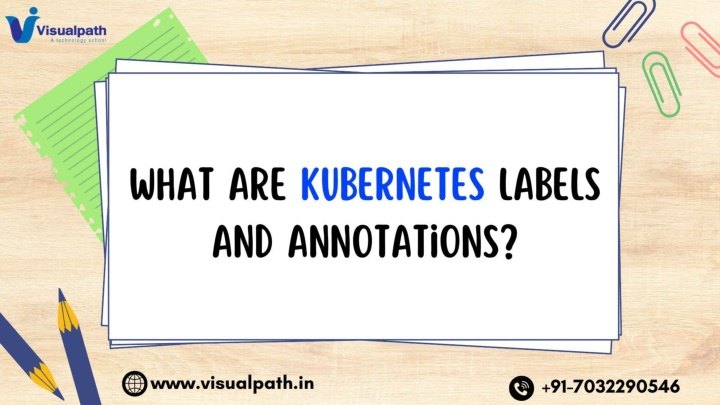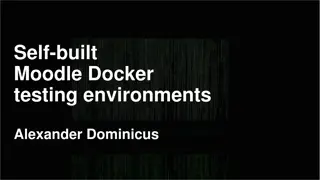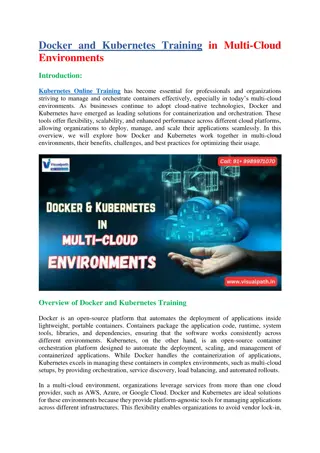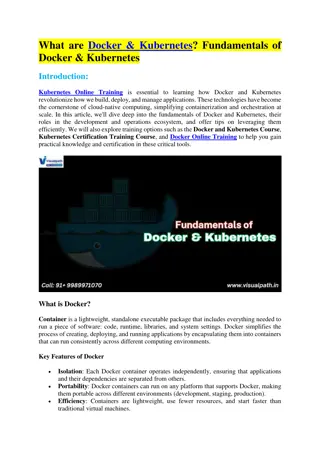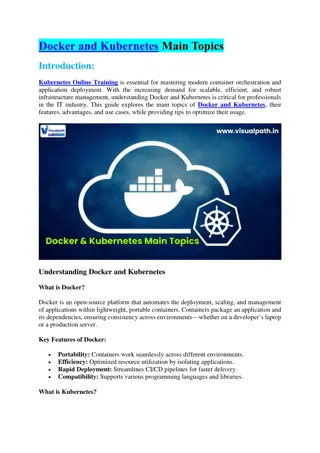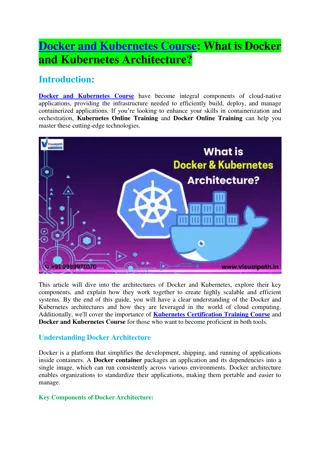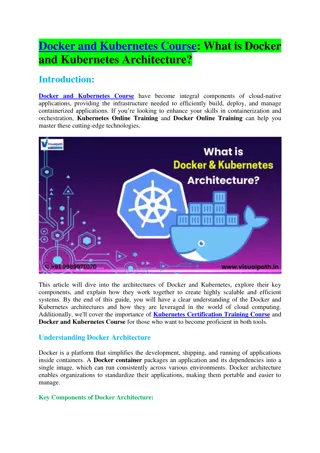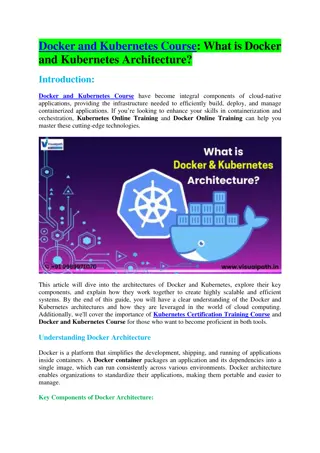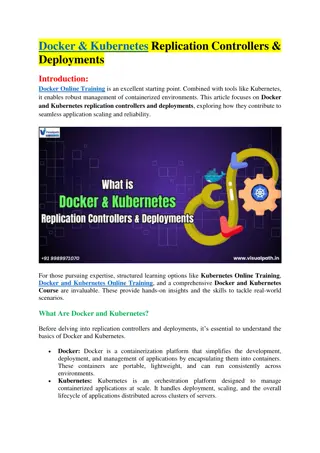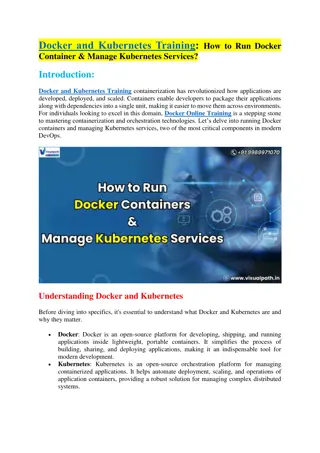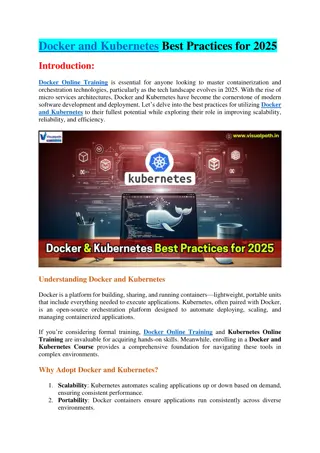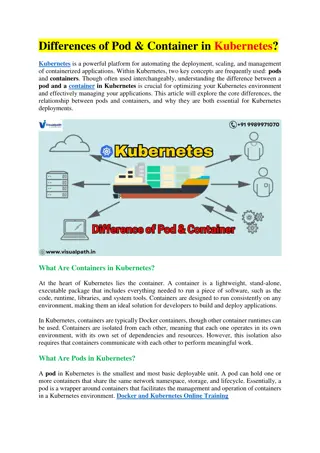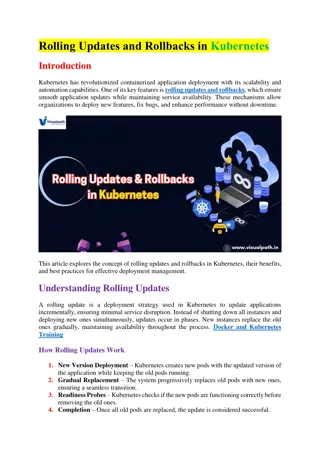Best Docker and Kubernetes Training - Docker and Kubernetes Course
Docker and Kubernetes Online Training with real-time experts for hands-on learning. Enroll now or call 91-7032290546 today!nVisit: // /online-docker-and-kubernetes-training.html
Uploaded on Apr 12, 2025 | 3 Views
Download Presentation

Please find below an Image/Link to download the presentation.
The content on the website is provided AS IS for your information and personal use only. It may not be sold, licensed, or shared on other websites without obtaining consent from the author.If you encounter any issues during the download, it is possible that the publisher has removed the file from their server.
You are allowed to download the files provided on this website for personal or commercial use, subject to the condition that they are used lawfully. All files are the property of their respective owners.
The content on the website is provided AS IS for your information and personal use only. It may not be sold, licensed, or shared on other websites without obtaining consent from the author.
E N D
Presentation Transcript
Click to edit Master title style FPPT.com
Introduction to Kubernetes Metadata Content: Kubernetes objects (Pods, Deployments, Services, etc.) often need metadata. Metadata helps in organizing, selecting, and managing resources. Two key metadata types: o Labels o Annotations +91-7032290546 www.visualpath.in
What are Labels in Kubernetes? Content: Labels are key/value pairs attached to Kubernetes objects. Used to organize and select subsets of objects. Common use cases: o App versioning (app=nginx, version=v1) o Environment separation (env=prod, env=dev) +91-7032290546 www.visualpath.in
Use Cases of Labels Content: Service discovery (Services select Pods using labels) Rollouts and updates (Label-based deployments) Monitoring and alerting (Group by labels in tools like Prometheus) CI/CD pipelines (Label for stages or environments) +91-7032290546 www.visualpath.in
What are Annotations in Kubernetes? Content: Annotations are also key/value pairs, but meant for non- identifying metadata. Provide additional information not used for selection. Examples: o Tooling data (e.g., last deployment time) o Contact info for object owners o Debug logs, URLs, or checksum data +91-7032290546 www.visualpath.in
Differences Between Labels and Annotations Feature Labels Annotations Used for Selection & grouping Informational purposes Queryable? Yes (selectors) No Size Limit Small (intended for filtering) Larger values supported Examples app=web, env=prod kubectl.kubernetes.io/last-applied-configuration +91-7032290546 www.visualpath.in
How to Use Labels & Annotations (YAML Example) yaml CopyEdit apiVersion: v1 kind: Pod metadata: name: mypod labels: app: nginx env: dev annotations: description: "This pod runs a dev version of nginx" owner: "team@example.com" +91-7032290546 www.visualpath.in
Best Practices Content: Use standardized naming for consistency (team, env, version) Avoid storing sensitive data in annotations Keep labels lightweight for performance in selectors Use annotations for tools, audits, and documentation +91-7032290546 www.visualpath.in
Summary Content: Labels and Annotations are vital for managing Kubernetes objects. Labels help in selection and grouping. Annotations store extra metadata not used by Kubernetes directly. Apply them smartly to improve automation, monitoring, and maintainability. +91-7032290546 www.visualpath.in
For More Information About Docker and Kubernetes Address:- Flat no: 205, 2nd Floor, Nilagiri Block, Aditya Enclave, Ameerpet, Hyderabad-16 Ph. No: +91-998997107 Visit: www.visualpath.in E-Mail: online@visualpath.in +91-7032290546 www.visualpath.in
Thank You Thank You Visit: www.visualpath.in +91-7032290546 www.visualpath.in
